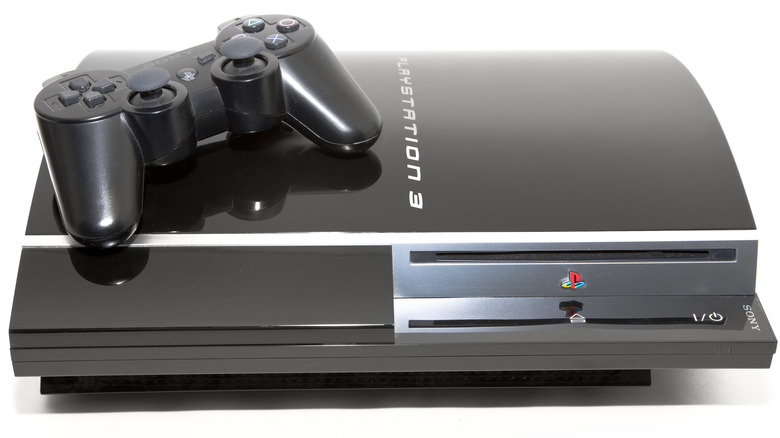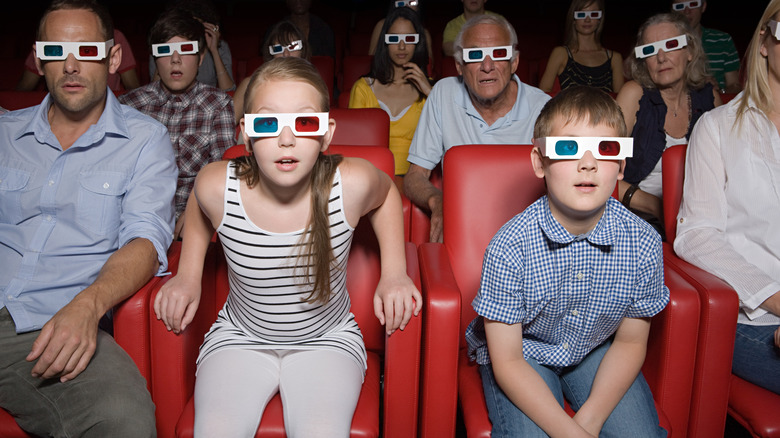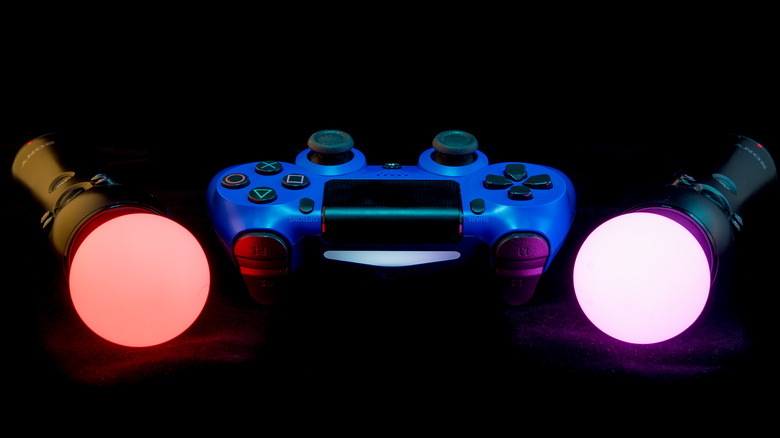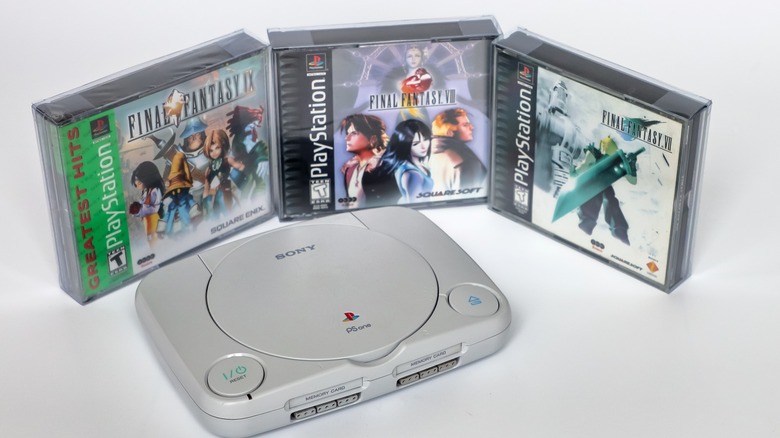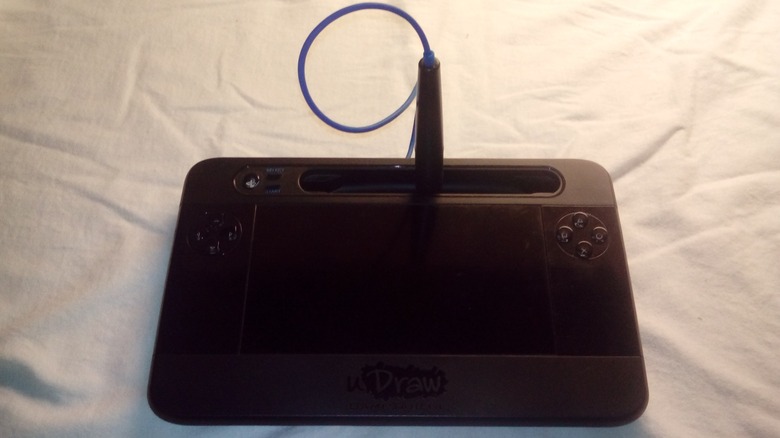5 Forgotten PS3 Features That Are Pure Nostalgia
There once was a time when the PlayStation 3 was the pinnacle of console gaming, a feat of technological engineering that arrived in 2006 alongside other seventh-generation platforms like the Nintendo Wii and Xbox 360. Gamers old enough to remember 8-bit and 16-bit titles or even older games from the Atari era, were thrilled to see the stunning graphics and power of the PS3, which saw the release of iconic games like "LittleBigPlanet," "Bioshock," and the original "Uncharted" titles.
But, more than 15 years since its release, the PS3 is practically a relic. An entire generation of gamers has since grown up having never played the console, though many of its innovations live on today in the PlayStation 5. Some of its features are obscure enough that you may have even forgotten they ever existed, but that doesn't mean they weren't cool, exciting, and fun while they were around. Here are five forgotten PS3 features that will give you the warm and fuzzy nostalgia that only the most beloved consoles from yesteryear can muster.
3D stereoscopic gaming
You may or may not remember a brief period around the time "Avatar" became the biggest movie of all time when 3D became all the rage in the tech world. This, of course, included an influx of 3D films in theaters, a trend that still persists in some capacity today. But the fad also made its way into homes, with big tech manufacturers like Sony trying to make 3D televisions the next big thing for people to spend their cash on. Some TVs would use sophisticated screens to simulate depth perception, while others opted for a more passive method utilizing 3D glasses. Either way, 3D televisions weren't just for watching movies like "Avatar" and "Piranha 3D." To help sell its own line of three-dimensional televisions, Sony pushed for stereoscopic 3D gameplay on the PS3.
Stereoscopic gaming added depth to the experience as if you could reach out and touch NPCs and other game elements. The PS3 didn't need any additional hardware to play stereoscopic games — though a software update was necessary, and users had to tweak their console settings to enable 3D. Of course, a 3D TV was necessary as well. There were plenty of stereoscopic titles to play in 3D too, because the library wasn't limited to minigames or titles made specifically for the format. Stereoscopic 3D games for the PS3 included "Gran Turismo 5," "Crysis," "Uncharted 3," "Call of Duty: Black Ops," "Batman: Arkham City," and many more.
PlayStation Eye and PlayStation Move
It didn't take long after the massive success of the Nintendo Wii for Sony to come up with its own motion-control peripheral for the PS3: the PlayStation Move. The Move had a similar wand-like design to the Wiimote, though with a big bulbous sensor on the end that could light up in different colors. The orb was tracked by an additional peripheral, the PlayStation Eye, which was released in October 2007.
The PlayStation Eye was succeeded by the PlayStation Camera for the PS4, but the look and specific use cases for the Eye lend the peripheral a nostalgic charm that harkens back to when technology was just beginning to utilize two-way video and augmented reality in a mainstream fashion.
The PlayStation Eye could capture SD video with a frame rate of either 60Hz (at 640x480 resolution) or 120Hz (at 320x240). It had two different field-of-views: 56 degrees or a wider 75 degrees. It also had a built-in microphone capable of voice location tracking, echo cancellation, and background noise suppression. The Eye could be used for both video and audio chat and worked with EyeCreate video editing software for nascent video blogging and other content creation. Paired with one or two PlayStation Move controllers, you could play Wii-type games with PS3-level graphics and power, like "Resident Evil 5," "Tiger Woods PGA Tour," and "Just Dance."
PS1 backwards compatibility
While there are some classic original PlayStation games available to digitally download and play on the PS5, the PlayStation 3 was backwards compatible with all PS1 titles, thanks to its disk drive. Depending on which version of the PS3 you had, you could also play physical PS2 games.
This greatly expanded the library of titles you could play on the PS3, especially since digital gaming was still in its early years. You could pick up pre-owned PS1 games from your local GameStop or other retailer for cheap to add to your collection of more expensive PS3 titles.
It also allowed you to keep playing your favorite games from two generations earlier that didn't have modern equivalents, but that you didn't want to stop playing just because you upgraded your console. Playing PS1 games on a PS3 can evoke a double dose of nostalgia, and have you reminiscing about the days when you were reminiscing about the games from nearly 30 years ago.
BD-Live
One of the coolest things about owning the PlayStation 3 was that it meant you had a Blu-ray player. This was great, because dedicated Blu-ray players were typically very expensive at the time, as the HD upgrade from DVD technology was still only a few years old. This made the PS3 not just a gaming console, but a multimedia device, foreshadowing the further blending of the two in subsequent generations with the Xbox One and PlayStation 4.
The PS3 made it easy for anyone to watch movies and TV shows with its Blu-ray player. Thanks to an accessory that looked and worked just like typical television remotes of its day, you wouldn't need a PlayStation controller to awkwardly pause, rewind, and navigate Blu-ray menus.
Additionally, the PlayStation 3 had a feature called BD-Live. BD-Live was an early example of physical media being enhanced with an internet connection to download additional features, a precursor to always-online smart TVs and modern consoles. With BD-Live, you could access behind-the-scenes content and scheduled internet chats with filmmakers, as well as downloadable movie trailers, trivia, and other games.
Cool, unique peripherals
As long as there have been game consoles, there have been oddball peripherals you can't help but be nostalgic about. The PlayStation 3 was no different and had several unique accessories that would only work properly with a small handful of games. While some are still well-known — like the guitar and other instruments from the "Guitar Hero" and "Rock Band" series — there are others you may have used constantly years ago but have now completely forgotten about.
Activision sold a plastic balance board peripheral that resembled a skateboard with no wheels. It was used for two games, and not much else: 2009's "Tony Hawk: Ride" and its 2010 sequel "Tony Hawk: Shred." The accessory was used by players to not-quite-simulate ollies and other skateboard moves, similar to how "Guitar Hero" gave a rough interpretation of what actual guitar playing was like. In "Shred," you could also use the controller to snowboard.
Other funky accessories include the uDraw GameTablet, which predated the rise of the Wii U. The uDraw was released in 2011 and could be used to make digital art, as well as play PS3 games like "Pictionary" and "SpongeBob SquigglePants." Another peripheral was the "Buzz!" Buzzer, a retro-looking handheld buzzing device made specifically for the trivia game series "Buzz!" The USB controller aimed to give you a true quiz show experience while playing in front of your PS3.
[Image by owner of the fantastic shirt via Wikimedia Commons | Cropped and scaled | CC BY-SA 4.0]
